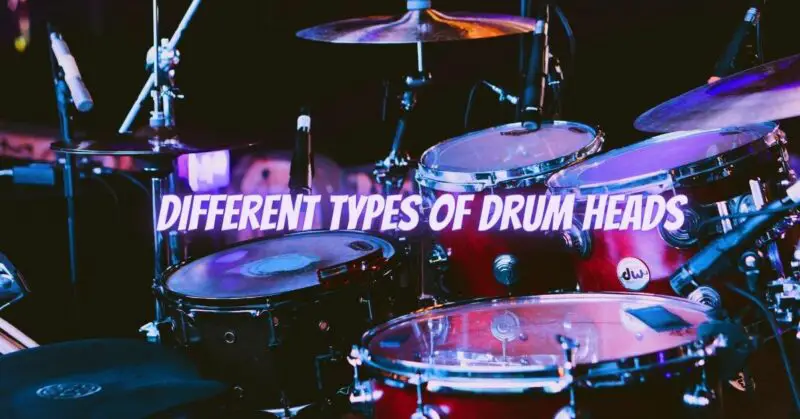Drum heads are a vital component of a drum set, directly influencing the sound, tone, and feel of the drums. Choosing the right drum heads can greatly enhance your playing experience and help you achieve the desired sound for various musical styles. In this article, we will delve into the world of drum heads and explore different types available, each with its unique characteristics and suitability for specific drumming styles.
- Coated Drum Heads: Coated drum heads feature a thin layer of coating applied to the surface, giving them a textured or rough feel. The coating reduces overtones and provides a slightly warmer and drier sound compared to clear heads. Coated heads are popular among drummers who seek a vintage, warm sound and excel in genres like jazz, blues, and rock. They are also preferred for brush playing due to the added texture.
- Clear Drum Heads: Clear drum heads are widely used and known for their bright and open sound. With no coating, they allow the drum’s natural tone and overtones to resonate freely, producing a vibrant and sustained sound. Clear heads are versatile and work well in various musical styles, including pop, rock, fusion, and heavy metal. They offer a balanced mix of attack, sustain, and projection.
- Single-Ply Drum Heads: Single-ply drum heads are constructed from a single layer of material, typically made of either polyester film (Mylar) or thin coated films. They produce a more open, resonant, and sensitive sound with enhanced overtones. Single-ply heads are favored in genres like jazz, fusion, and orchestral music where clarity and sensitivity are crucial. They are also popular for use as resonant heads on toms and bass drums.
- Double-Ply Drum Heads: Double-ply drum heads consist of two layers of material, offering increased durability, attack, and control over the drum’s sound. They provide a focused and more controlled sound with reduced overtones and increased durability, making them suitable for louder playing styles, rock, metal, and situations that require a more pronounced attack and enhanced projection.
- Hydraulic Drum Heads: Hydraulic drum heads feature two plies with a layer of oil sandwiched between them. This design enhances durability, reduces overtones, and produces a short sustain. Hydraulic heads are known for their fat, punchy sound, making them well-suited for genres such as rock, funk, and reggae. They offer excellent consistency and can be an excellent choice for drummers seeking a focused and controlled sound.
- Mesh Drum Heads: Mesh drum heads, also known as electronic drum heads, are made of tightly woven synthetic material. They are primarily used with electronic drum kits for quieter practice and recording. Mesh heads offer a natural drum-like feel with reduced volume, making them ideal for home practice or situations where low noise is required.
- Specialty Drum Heads: In addition to the standard types mentioned above, there are specialized drum heads designed for specific purposes:
a. Bass Drum Heads: Bass drum heads come in different sizes and variations to produce various bass drum sounds, such as deep and boomy or punchy and focused. Some bass drum heads feature built-in dampening or muffling options to control the drum’s resonance.
b. Snare Drum Heads: Snare drum heads often have added durability and focus to withstand the intense and consistent playing on the snare. They come in different thicknesses and coatings to cater to various playing styles and desired sound characteristics.
c. Resonant Drum Heads: Resonant heads are typically thinner and less prominent, used on the bottom side of the drum to enhance sustain and tonal quality. They play a crucial role in shaping the overall sound and resonance of the drum.
Conclusion: Selecting the right drum heads is essential for achieving the desired sound and feel of your drum set. Whether you prefer the warm and vintage tones of coated heads, the bright and resonant qualities of clear heads, or the focused attack of double-ply heads, understanding the characteristics of different drum head types is key. Experimenting with various combinations of drum heads can unlock new sonic possibilities and cater to different drumming styles and musical genres. Consider your playing style, musical preferences, and the sound you aim to achieve when choosing drum heads, and let the rhythm and beat of your drums come alive with the perfect selection.

